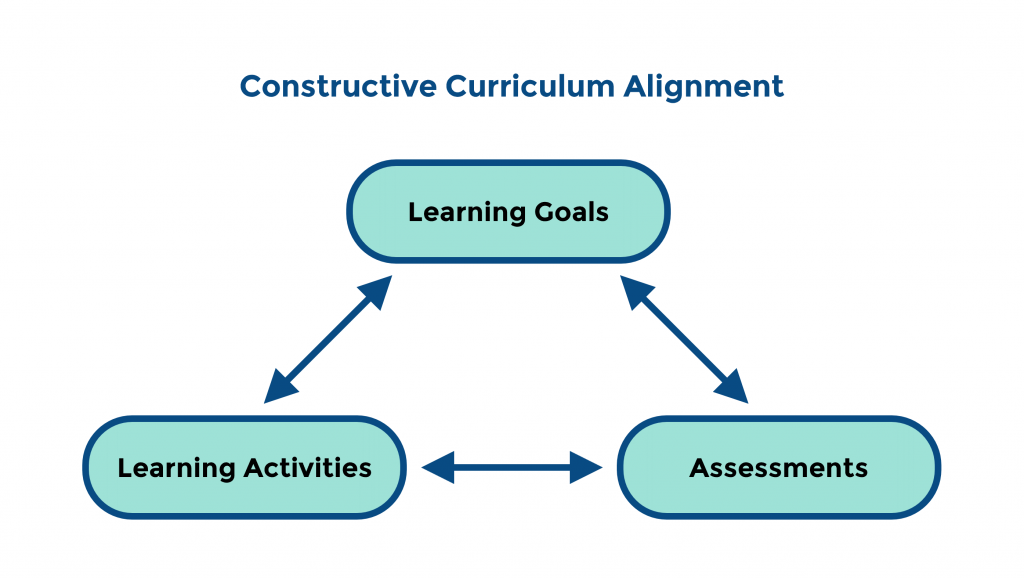10
Reflection
High-Quality Online Assessments
Assessment is a process that helps us gather information about learner performance.
The choices we make in assessment design guide the design and delivery of lessons and learning activities in face-to-face and online contexts.[1]
A well-planned assessment strategy is essential to learner success in virtual environments. This strategy includes a variety of assessments that are
1. Authentic
2. Culturally Responsive
3. Aligned Strongly with Course Learning Goals


Tip: When designing an assessment, make sure that the skills and knowledge you are measuring align with the learning goals of the course.
Through frequent and ongoing assessment, we not only see the progress of student learning, but we also see opportunities to reflect on and improve the quality of learning experiences for students.
Criteria for Effective Online Design
Kumar et al. (2019) analyzed data related to the online course design of eight award-winning online teachers in the United States. The goal was to shed light on what factors influenced these faculty in “exemplary online course design” (p. 161).[3] These award winners shared their attitudes, experiences and approaches to online course design. All of these elements refer to module design, which includes assessments.
The researchers determined the following criteria for effective online design:
- authenticity and relevance
- use of multimedia resources
- student creation of digital content (individual and collaborative)
- student reflection on learning
- clearly articulated purpose of activities, technologies and assessments
As you read through the online assessment strategies presented in this module, consider how each assessment meets these broader criteria for effective online design.
- Elbow, P. (1993). Ranking, evaluating, and liking: Sorting out three forms of judgment. College English, 55(2), 187–206. https://doi.org/10.2307/378503 ↵
- Montenegro, E., & Jankowski, N. A. (2017). Equity and assessment: Moving towards culturally responsive assessment [PDF]. (Occasional Paper No. 29). Urbana, IL: University of Illinois and Indiana University, National Institute for Learning Outcomes Assessment ↵
- Kumar, S., Martin, F., Budhrani, K., & Ritzhaupt, A. (2019). Award-winning faculty online teaching practices: Elements of award-winning courses. Online Learning, 23(4), 160-180. https://doi.org/10.24059/olj.v23i4.2077 ↵

